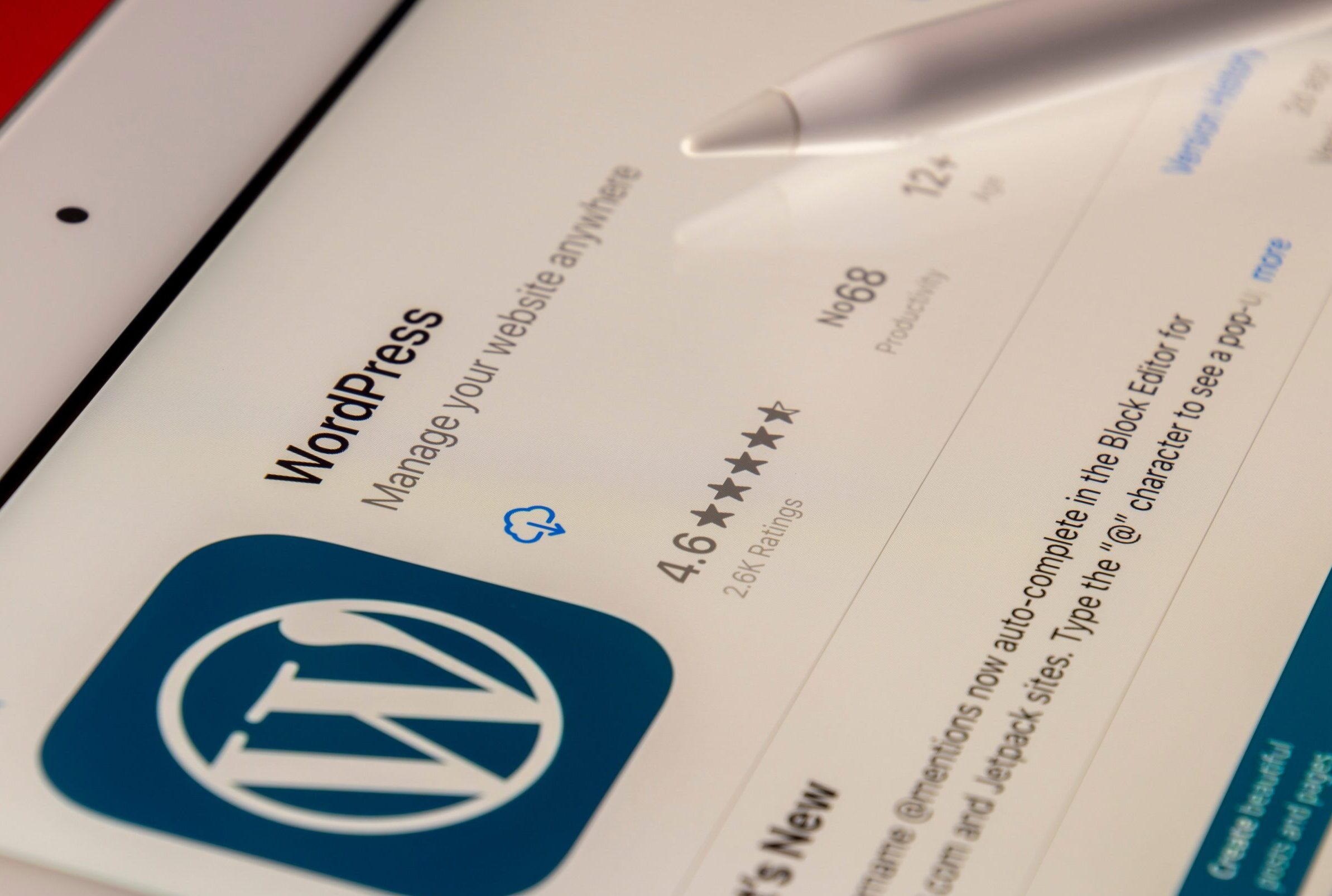Welcome to the ultimate guide to WordPress, where we will take you on a journey through the wonderful world of creating a website that not only attracts visitors but also converts them into loyal customers. Whether you’re a seasoned entrepreneur or just starting out in the online business realm, WordPress is your ultimate companion on this quest for success.
But what exactly is WordPress? Why should you choose it over other website builders? And how can you harness its power to create a website that drives conversions like never before? Fear not, dear reader! We have all the answers and more.
In this comprehensive guide, we’ll walk you through every step of creating a WordPress website that captivates your audience and compels them to take action. From understanding the different types of websites you can create with WordPress to choosing the perfect theme and optimizing your site for search engines – we’ve got it all covered!
So fasten your seatbelts and get ready to unlock the full potential of WordPress. Your journey towards an irresistible online presence starts now!
What is WordPress?
WordPress is a powerful and versatile content management system (CMS) that allows you to create, manage, and customize your website with ease. It provides an intuitive interface, making it accessible for beginners while offering advanced features for experienced users.

At its core, WordPress is an open-source platform built on PHP and MySQL. This means that anyone can use, modify, or distribute the software without any licensing fees. With thousands of themes and plugins available in the WordPress ecosystem, you have endless possibilities to design a unique website tailored to your brand’s identity.
One of the key strengths of WordPress is its user-friendly nature. You don’t need coding skills or technical expertise to get started with building your site. The interface is intuitive and straightforward, allowing you to easily add pages, blog posts, images, videos, and more.
What sets WordPress apart from other CMS platforms is its active community support. This vibrant community contributes regularly by developing new themes, plugins, updates security measures against vulnerabilities ensuring that WordPress remains up-to-date and secure.
Whether you’re creating a personal blog or an e-commerce store, WordPress offers flexibility and scalability options for businesses of all sizes.
From small start-ups to multinational corporations, WordPress can handle diverse needs with efficiency.
Why Use WordPress?
WordPress has become the go-to platform for website creation, and it’s not hard to see why. One of the main reasons to use WordPress is its sheer flexibility. Whether you’re creating a personal blog or an e-commerce site, WordPress offers endless possibilities.
One of the biggest advantages of using WordPress is its user-friendly interface. You don’t need to be a tech expert to navigate through its features and build your website. With its intuitive design, anyone can create a professional-looking site with ease.

Another reason why WordPress is so popular is its extensive plugin directory. These plugins allow you to add various functionalities and features to your website without any coding knowledge. From SEO optimization tools to contact forms and social media integrations, there’s a plugin for almost everything.
Additionally, WordPress offers great customization options with themes and templates. You can choose from thousands of pre-designed themes or create your own unique look by customizing them according to your brand identity.
Furthermore, one cannot ignore the fact that WordPress websites are highly search engine friendly. The platform is built in such a way that search engines can easily crawl and index its content, helping improve your site’s visibility on search engine result pages (SERPs).
WordPress provides regular updates and security patches that ensure your website remains safe from potential threats and vulnerabilities.
If you’re looking for an easy-to-use platform that offers limitless possibilities for customization while being search engine friendly, then using WordPress for building your website is definitely worth considering!
How to Create a WordPress Website
Creating a WordPress website can seem like a daunting task, but with the right guidance, it can be a smooth and enjoyable process. Here’s a step-by-step guide to help you get started.
You’ll need to choose a domain name for your website. This is essentially the address where people will find your site online. Make sure it’s catchy and relevant to your brand or business.
Next, you’ll need to select a reliable web hosting provider. This is where all of your website files will be stored so that they’re accessible to visitors. Look for a host that offers good uptime, fast loading speeds, and excellent customer support.

Once you’ve secured your domain name and hosting provider, it’s time to install WordPress on your server. Most hosts offer one-click installations for WordPress, making it incredibly easy to set up.
After installing WordPress, you’ll want to choose a theme that suits the purpose of your website. There are thousands of free and premium themes available in the WordPress repository or from third-party sources.
Now comes the fun part – customizing your website! With WordPress’s user-friendly interface, you can easily create pages and add content using its built-in editor or page builders like Elementor or Divi.
To enhance the functionality of your website further, consider installing plugins specific to your needs. Whether you want an e-commerce store with WooCommerce or SEO optimization tools like Yoast SEO – there’s likely a plugin out there for every feature imaginable!
Lastly (for now), don’t forget about search engine optimization (SEO). Optimizing each page with relevant keywords and meta tags will help improve visibility in search engines like Google – ultimately driving more organic traffic to your site.
Remember – creating a successful WordPress website takes time and effort; but with patience and dedication combined with these steps outlined above – you’re well on your way towards building an engaging online presence!
The Different Types of WordPress Websites
When it comes to creating a website using WordPress, the options are endless. This powerful platform allows you to build various types of websites, each serving different purposes. Whether you’re starting a blog, an online store, or even a portfolio site, WordPress has got you covered.
One popular type of WordPress website is the blog. Blogs are perfect for individuals or businesses looking to share their thoughts and expertise with the world. With WordPress’s user-friendly interface and customizable themes, you can easily create a visually appealing and engaging blog that attracts readers.
If you’re planning on selling products or services online, an e-commerce website is what you need. With plugins like WooCommerce, setting up your own online store is a breeze with WordPress. You can showcase your products, manage inventory, process payments securely – all in one convenient platform.
For those in creative fields such as photography or design, a portfolio website lets you showcase your work in style. Choose from numerous photography-focused themes that allow for stunning image galleries and easy navigation to impress potential clients.
Another type of WordPress website is the business website. Whether large corporations or small local businesses – they both benefit from having an informative and professional online presence where customers can learn more about their products/services and get in touch easily.
Non-profit organizations also find value in using WordPress for their websites. They can effectively communicate their mission through customized pages while integrating donation forms seamlessly for supporters who want to contribute towards their cause.
How to Choose a WordPress Theme
When it comes to choosing a WordPress theme for your website, there are several factors to consider. First and foremost, you need to think about the purpose of your website and the type of content you will be showcasing. Are you running a business blog? An online store? A portfolio site?
Next, take some time to explore different themes that align with your vision. There are thousands of free and premium themes available on WordPress.org and other marketplaces like ThemeForest. Look for themes that have a clean design, responsive layout, and customizable options.
Consider the level of support offered by the theme developer as well. It’s important to choose a theme that is regularly updated and supported in case any issues arise down the line.
Furthermore, pay attention to user reviews and ratings for each theme you’re considering. This can give you valuable insights into how easy it is to use and whether or not others have had positive experiences with it.
Don’t forget about SEO optimization when choosing a WordPress theme. Look for themes that are built with clean code and follow best practices in terms of speed and performance.
By carefully considering these factors, you can choose a WordPress theme that perfectly suits your needs while also ensuring an optimal user experience for your visitors.
How to Install WordPress Plugins
WordPress plugins are what make this platform so versatile and customizable. They allow you to add functionality, enhance the user experience, and optimize your website for better performance. Installing WordPress plugins is a straightforward process that can be done in just a few simple steps.
To install a plugin, first log in to your WordPress dashboard. Then, go to the Plugins section and click on “Add New.” Here, you’ll find thousands of free and premium plugins available for download. You can search for specific plugins by name or browse through different categories.

Once you’ve found a plugin that suits your needs, click on the “Install Now” button next to it. WordPress will automatically download and install the plugin onto your website. After installation is complete, don’t forget to click on the “Activate” button to enable the plugin’s features.
Some plugins may require additional setup or configuration after activation. This usually involves going into their settings page or adding some code snippets if necessary.
It’s important to note that while there are many great WordPress plugins out there, installing too many can slow down your website’s performance. So choose wisely and only install those that are essential for enhancing your site’s functionality.
Remember to regularly update your installed plugins as new versions often contain bug fixes and security patches. Keeping everything up-to-date ensures smooth operation of your website without any vulnerabilities.
With these simple steps, you can easily install WordPress plugins and unlock endless possibilities for optimizing your website according to your needs!
How to Optimize Your WordPress Website for Search Engines
In a digital world where standing out from the crowd is crucial, optimizing your WordPress website for search engines can make all the difference in attracting and converting visitors into loyal customers. By following these steps, you’ll be well on your way to creating a WordPress website that not only looks great but also performs exceptionally well:
- Content is key: Ensure that your website has high-quality, relevant content that provides value to your target audience. Use keywords strategically throughout your content to improve visibility on search engine results pages.
- Optimize meta tags: Meta tags are HTML elements that provide information about a web page to search engines. Pay attention to title tags and meta descriptions, making them concise, compelling, and keyword-rich.
- Mobile-friendly design: With more people accessing the internet through mobile devices than ever before, having a responsive design is essential. Make sure your WordPress theme is optimized for mobile users.
- Speed matters: Page load speed directly impacts user experience and SEO rankings. Optimize images, use caching plugins like WP Rocket or W3 Total Cache, and minimize unnecessary scripts or plugins to improve site speed.
- URL structure: Create clean and descriptive URLs that include relevant keywords for better search engine visibility.
- XML sitemap submission: Submitting an XML sitemap helps search engines index all pages of your website efficiently.
- Build quality backlinks: Focus on building high-quality backlinks from reputable websites related to your industry or niche as they play a significant role in boosting organic traffic and improving rankings
- Social media integration: Leverage social media platforms by integrating share buttons across valuable blog posts or pages on your WordPress website; this encourages readers to easily share content with their networks which increases engagement & exposure
By implementing these strategies consistently over time while continually monitoring performance through tools like Google Analytics or Yoast SEO plugin metrics , you will steadily increase organic traffic flow leading towards higher conversion rates.
Remember – optimizing your WordPress website for search engines is an ongoing process. Stay up to date with
